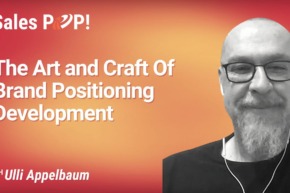Social selling has increased significantly, in the last few years especially. Yet, there are some significant pitfalls that salespeople are still falling into. Tom Skotidas explores some of these pitfalls and how to avoid them this expert sales interview, hosted by John Golden.
This expert sales interview covers social selling:
- How to properly connect on social media
- Challenging unhelpful psychological blocks
- Navigating the shortcut culture
Connecting on Social Media:
One of the biggest pitfalls that people make involves how they connect online. When you meet someone in person, you create a connection based on appropriate protocols. This might include apologizing for the interruption, introducing yourself, giving context to why you are contacting them, and then shaking each other’s hands and have a chat. Online, however, people are keen on hitting connect over and over again without sending a personal message or providing context. “Salespeople do this with people they want to sell million dollar deals to,” said Skotidas. “I find it frustrating that people haven’t done more research on the platform to understand how to connect with people better.” It’s a strange disconnect that people have between online and offline behavior. Salespeople need to do more research on how to properly use social platforms and look to offline interaction to dictate online communication.
Preventing Psychological Blocks:
“There are different psychological blocks that I’ve encountered throughout the last ten years of working on social selling, and teaching it,” said Skotidas. There is one mental block, in particular, that is ultimately just a detriment to their social selling potential. “People say, I know I should be connecting on LinkedIn and Twitter with my customers and key partners, but I’m worried that if I do that, other competitors will go and poach them,” said Skotidas. “They are worried about too much exposure and the fact that interactions are all public.” Even if there is a competitor who might want to poach your clients, and the customer does leave, it means they were about to switch providers anyway. “The benefit of connecting with your customers far outweighs the cost of losing your customer because of competitors stalking your profile.”
Navigating the Shortcut Culture:
We live in a shortcut culture, where everyone is looking for shortcuts. It’s easy to forget that we are still interacting with human beings when using social selling. Despite this shortcut culture that is alive in all of is, it is still possible to take shortcuts and still make your communication personable. For example, if you are sending emails, you might have a template that is 85% the same per message. This is okay, as long as the 15% is unique and personalized. “It takes me about five to seven minutes per person to customize my messages,” said Skotidas. “That might seem painful to many. But, getting a meeting with the head of marketing with a major software company is worth the hassle. I am a shortcut kind of guy, but I will never dip below the minimum required human being interaction.”
About Our Host
John is the Amazon bestselling author of Winning the Battle for Sales: Lessons on Closing Every Deal from the World’s Greatest Military Victories and Social Upheaval: How to Win at Social Selling. A globally acknowledged Sales & Marketing thought leader, speaker, and strategist. He is CSMO at Pipeliner CRM. In his spare time, John is an avid Martial Artist.
Pipeliner CRM greatly enables precise lead management. Try a free trial today.






Comments